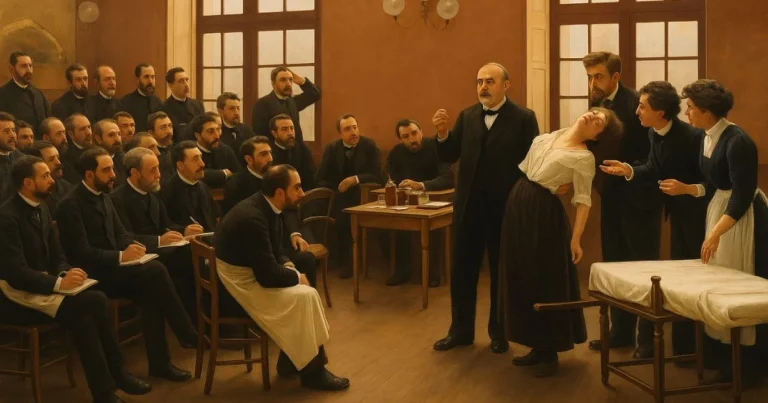The crowd: A study of the popular mind – A visionary look into group dynamics
In 1895, the French physician and sociologist Gustave Le Bon published The Crowd: A Study of the Popular Mind, a timeless classic in the fields of social and political psychology. This work delves into the dynamics of crowds and their impact on human behavior, a theme that remains remarkably relevant in today’s era of social media and mass movements. How do Le Bon’s ideas continue to illuminate modern collective phenomena?
Summary of Gustave Le Bon’s main ideas
Lost in the masses: how individual identity fades in a crowd
Le Bon examines how a person undergoes a profound psychological shift when becoming part of a crowd. Group membership lowers personal inhibitions and encourages impulsive behavior—often in contradiction to an individual’s usual moral standards. The concept of psychological contagion plays a central role: ideas and emotions can spread quickly, causing peaceful demonstrations, for instance, to erupt into sudden violence triggered by a shared impulse.
According to Le Bon, this transformation results from the loss of individual identity in favor of a collective mindset. Within a crowd, a person becomes anonymous, shielded by the group’s size, which amplifies irrational behaviors. This phenomenon can manifest in a range of situations, from revolutions and religious gatherings to sporting events.
Beyond reason: why crowds defy logic
A key concept in Le Bon’s work is the collective mentality. He suggests that crowds are driven more by emotion than by reason. They gravitate toward simple, often exaggerated ideas, and respond strongly to evocative images or symbols. Le Bon cites historical examples such as revolutions and mass movements, where simplistic yet powerful slogans proved decisive.
This tendency toward irrationality makes crowds highly susceptible to manipulation. Their collective decisions may be guided by blind enthusiasm or outright panic, without the balance of rational thought.
Masters of influence: how charismatic leaders sway the masses
Le Bon pays special attention to leaders—charismatic figures who can sway the masses through straightforward, emotionally charged rhetoric. Their influence hinges on three main tactics: repetition, which anchors a message in the public mind through constant reinforcement; simplification, which removes nuanced complexities to create clear, accessible ideas; and authority, which fosters a sense of unquestionable command to inspire trust and obedience. By targeting the crowd’s psychological mechanisms, leaders are able to shape opinions and steer behavior with remarkable efficiency.
Contemporary examples abound, from political figures to social media influencers, who use these techniques to rally or manipulate entire groups.
Revolutionary ideas, enduring controversy: Le Bon’s lasting impact
Although Le Bon was ahead of his time in linking psychology, sociology, and politics, his view of crowds as irrational and easily manipulated drew criticism for its pessimism. Modern analyses highlight his neglect of socioeconomic contexts and cultural diversity. Nevertheless, his insights remain strikingly relevant in the digital age, where psychological contagion is vividly illustrated by social media dynamics. The rapid spread of “likes,” shares, and viral trends testifies to the swift dissemination of emotions and ideas among online crowds.
However, his work does not account for the feedback loops inherent in modern platforms, where interactions between individuals and algorithms further complicate the flow of influence. Moreover, Le Bon’s approach sometimes oversimplifies group behavior by assuming uniformity in crowds and minimizing individual autonomy within larger collectives.
Mastering the crowd: why Le Bon’s work remains vital today
The role of media and social networks
Many of Le Bon’s principles can be found in today’s media and social networks. These outlets serve as modern amplifiers of psychological contagion. A viral message—be it an idea, opinion, or emotionally charged post—can quickly mobilize online communities on a global scale. Disinformation campaigns, social movements, or digital calls to action all illustrate these mechanics.
Algorithms also play a critical part. They reinforce filter bubbles, exposing individuals to homogeneous viewpoints that resonate with their emotions, ultimately creating even more unified and suggestible digital crowds.
Politics and mass communication
Le Bon’s ideas remain especially pertinent in analyzing modern political strategies. Populist leaders capitalize on emotion and simplification to captivate the masses. Political slogans such as “Make America Great Again” or “Yes We Can” rely on succinct, uplifting phrases that evoke strong feelings while remaining deliberately vague. Moreover, the crowd’s susceptibility to repetitive messaging and subtle suggestion is evident in political or advertising campaigns that play on fear, hope, or anger.
Le Bon’s framework offers valuable insights into recent events such as France’s so-called Yellow Vest protests and worldwide climate demonstrations, where emotional mobilization is reinforced by potent symbols (the yellow vest as a rallying sign, for instance) and viral communication.
A look at sporting events
Sporting events, especially soccer matches, vividly demonstrate Le Bon’s ideas on crowd psychology. Fans temporarily shed individual differences to adopt a shared identity, united by the common goal of supporting their team. Several of Le Bon’s dynamics come into play: anonymity, where the sheer size of the crowd provides a sense of protection that can fuel behavior ranging from exuberant chanting to violent outbursts; emotional contagion, as cheers, applause, and reactions to the action on the field spread rapidly, creating a charged atmosphere of collective synchronization; and polarization, which intensifies rivalries between opposing fan groups and can sometimes lead to aggression, exemplified by hooliganism.
Nevertheless, sports crowds are not invariably negative. They can also foster community spirit and a sense of belonging, providing a collective emotional release. Major victories may spark widespread celebrations that cut across social and cultural divides, highlighting the positive energy crowds can generate.
Education plays a crucial role in counteracting these manipulative tendencies. Understanding Le Bon’s principles helps individuals develop cognitive resistance by honing their ability to analyze emotional messages, recognize biases, and verify information before sharing it or incorporating it into their worldview.
Le Bon’s The Crowd: A Study of the Popular Mind is far more than a historical text. It remains a valuable resource for examining modern social dynamics, from politics to popular culture. While some of its tenets call for critical evaluation, its groundbreaking perspective continues to inform researchers and practitioners alike.

Amine Lahhab
Television Director
Master’s Degree in Directing, École Supérieure de l’Audiovisuel (ESAV), University of Toulouse
Bachelor’s Degree in History, Hassan II University, Casablanca
DEUG in Philosophy, Hassan II University, Casablanca







